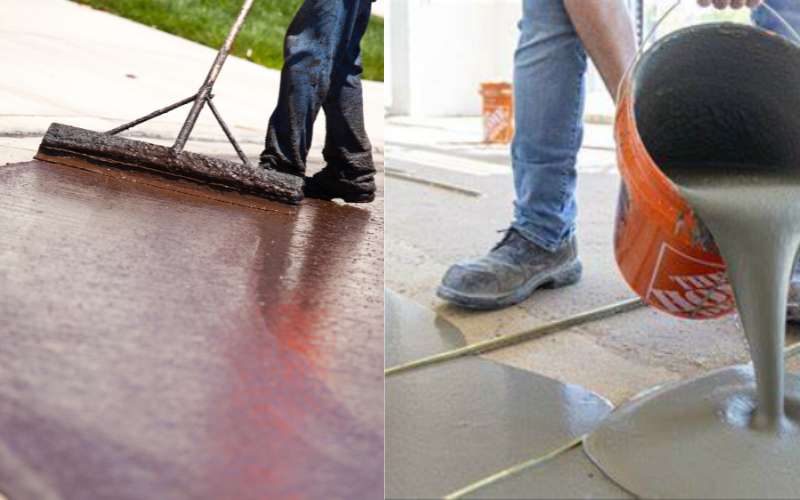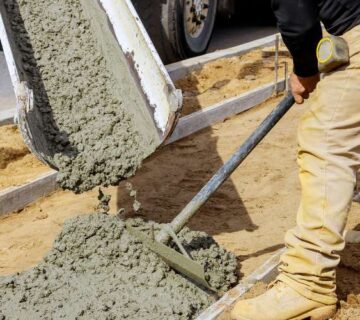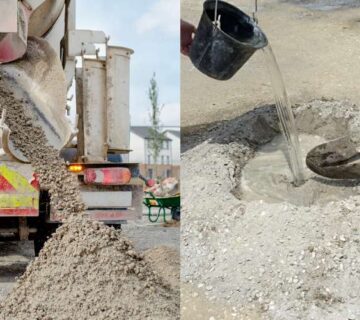Are you considering a makeover for your concrete surfaces? Understanding the Differences Between Concrete Overlays and Resurfacing is crucial to achieving the look and durability you desire. Many homeowners feel overwhelmed when deciding between these options, and choosing the wrong one could mean more expenses down the line. In this blog, we will guide you through the key differences between concrete overlays and resurfacing. You’ll learn which option is better for your needs, ensuring you make the right choice for your project.
Key Distinctions Between Concrete Overlays and Resurfacing
When it comes to renovating worn-out concrete surfaces, choosing between concrete overlays and resurfacing can be confusing. Both methods offer unique benefits and can transform the appearance of your floors, driveways, or patios. This section will break down each method to help you understand the differences and decide which one suits your needs.
What Are Concrete Overlays?
Concrete overlays are a popular choice for refreshing the look of existing concrete. An overlay involves applying a thin layer of cement-based material over the existing concrete surface. This new layer can be customized with different colors, textures, and patterns to achieve a desired aesthetic. The main advantage of concrete overlays is their versatility. Whether you want a sleek, modern look or a rustic, textured finish, overlays can meet your requirements.
Benefits of Using Concrete Overlays
- Cost-Effective Solution: Concrete overlays are often more affordable than full replacement. You save on demolition costs and avoid the hassle of tearing up old concrete.
- Customizable Aesthetics: With overlays, you have endless design options. You can replicate the look of natural stone, tile, or even wood.
- Durability and Longevity: When properly installed and maintained, concrete overlays can last for years. They are resistant to wear and tear, making them a long-term solution.
- Quick Installation: Overlays can be installed relatively quickly compared to other renovation methods. This reduces downtime and disruption to your daily life.
What Is Concrete Resurfacing?
Concrete resurfacing, on the other hand, involves applying a thin layer of polymer-modified cement over an existing concrete surface to repair cracks and improve its appearance. Unlike overlays, resurfacing is primarily focused on restoration rather than just aesthetics. It enhances the strength and durability of the concrete, making it a great option for heavily damaged surfaces.
Benefits of Concrete Resurfacing
- Repairs Damaged Concrete: Resurfacing is ideal for fixing cracks, spalling, and discoloration. It helps restore the structural integrity of the concrete surface.
- Enhances Durability: Resurfacing adds a protective layer that shields the concrete from weather, chemicals, and daily wear.
- Eco-Friendly Option: By choosing resurfacing, you reduce waste as you are not tearing out the old concrete.
- Improves Safety: Resurfaced concrete can have non-slip textures added, making it safer for walking, especially in wet conditions.
Key Differences Between Overlays and Resurfacing
- Purpose and Focus: The primary difference is that overlays are focused on aesthetic enhancement, while resurfacing is geared toward structural repair.
- Thickness of Application: Concrete overlays are usually thicker compared to resurfacing materials. Overlays provide more room for decorative patterns and textures.
- Suitable Conditions: Overlays work best when the concrete is in relatively good condition, whereas resurfacing is suitable for concrete that needs repair and reinforcement.
- Cost Variations: Resurfacing might be slightly more expensive due to the additional repair work needed, but both options are more affordable than replacing concrete entirely.
When to Choose Concrete Overlays
Choose concrete overlays if your primary goal is to upgrade the appearance of your concrete. Overlays are excellent for decorative purposes and can mimic other materials like brick or slate. They are perfect for patios, pool decks, and interior floors where style is a top priority.
When to Opt for Concrete Resurfacing
Opt for concrete resurfacing when dealing with damaged or deteriorating concrete that needs structural improvement. If your concrete has cracks, spalling, or is heavily stained, resurfacing will provide a renewed surface that is both functional and visually appealing.
Final Thoughts on Choosing Between Overlays and Resurfacing
Choosing between concrete overlays and resurfacing depends on the condition of your existing concrete and your specific needs. By understanding the differences between these two options, you can make an informed decision that will give you the best results for your concrete surfaces.
Ready to Transform Your Concrete Surfaces?
If you are ready to enhance your concrete surfaces, contact us today. Whether you choose concrete overlays or resurfacing, our team of experts is here to help you make the best choice for your project. Don’t wait any longer—transform your space now with our professional concrete services!





No comment